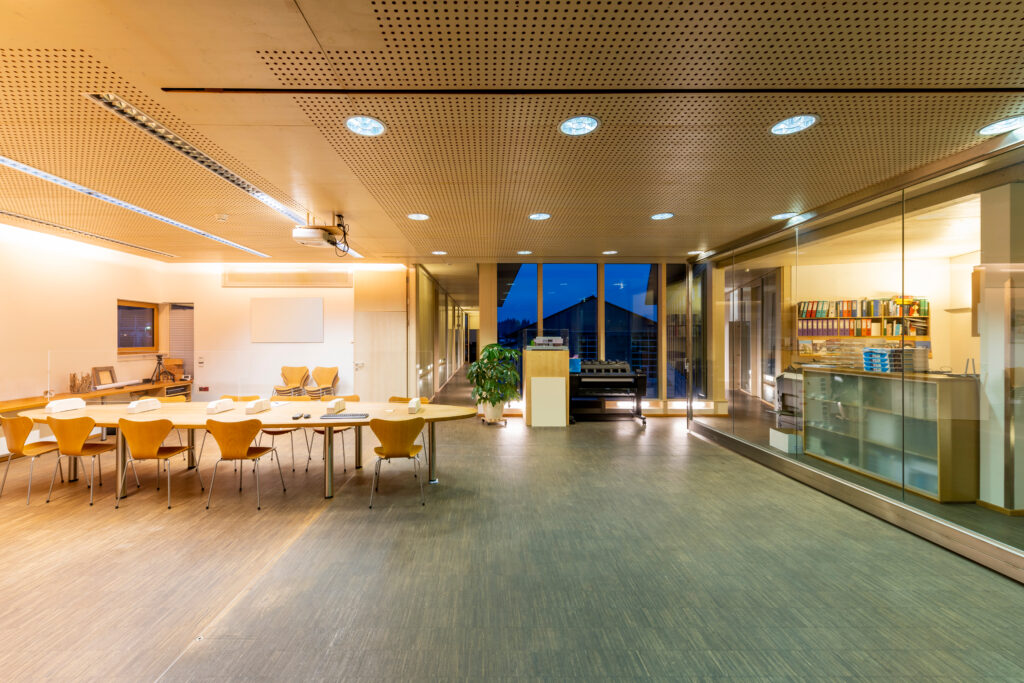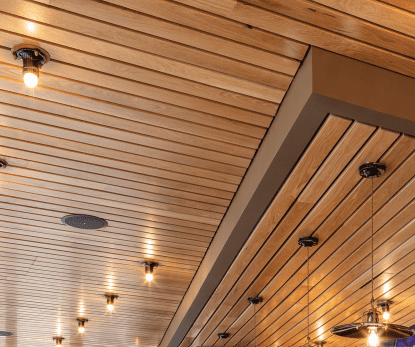Sound control is a critical consideration for commercial properties. Creating a pleasant and productive environment for employees, customers, or clients requires managing sound effectively.
One solution that has gained popularity is the use of acoustic wood panels. These panels not only add a touch of elegance to spaces but also contribute to sound absorption. Whether you’re using them for a performance space like an auditorium or simply a decorative way to tame environmental noises in a working environment, they can provide the sonic control that you need for a large room.
The Science of Sound
To grasp the concept of acoustic wood panels, it’s important to have a basic understanding of sound waves and how they behave. Sound travels in the form of waves, and these waves are defined by characteristics such as frequency and amplitude.
When sound waves encounter surfaces, they can be absorbed, reflected, or transmitted. Sound absorption is the ability of a material to absorb sonic energy rather than allowing it to bounce back into the room.
The sound absorption coefficient, commonly known as NRC (Noise Reduction Coefficient), is used to measure a material’s effectiveness in absorbing sound. NRC ratings range from 0 to 1, with higher values indicating better sound absorption. Different materials have varying NRC ratings, which impact their ability to reduce noise.
Types of Panels for Sound Control
Acoustic Wood Ceiling Panels
Acoustic wood ceilings are an excellent choice for enhancing sound absorption in commercial spaces. These ceilings are typically composed of wood panels specifically designed to minimize sound reflection and enhance acoustic performance. The grooved, perforated, or machined structure of the wood panels allows them to absorb sound waves, preventing excessive reverberation and echo.
When constructing and installing acoustic wood ceilings, it’s important to consider the type of system that suits your needs. There are various options available, including suspended ceiling systems and direct-mounted systems.
Suspended ceiling systems are versatile and provide easy access to utilities and maintenance, making them ideal for spaces with complex infrastructure requirements. Direct-mounted systems, on the other hand, offer a seamless appearance and are suitable for areas where aesthetics are a priority.
When positioning acoustic wood panels on the ceiling, it’s essential to follow installation guidelines. Proper positioning and spacing will ensure optimal sound absorption throughout the space. Additionally, if your commercial space requires lighting or ventilation fixtures, you need to consider how these elements can be integrated effectively with the ceiling system.
Acoustic Wood Walls
Similar to acoustic wood ceilings, acoustic walls offer great benefits in terms of sound absorption.
When it comes to construction and installation, there are different types of acoustic wood wall systems to choose from. These systems range from modular wall panels to custom-built installations. Modular wall panels are pre-fabricated and can be easily assembled, providing flexibility and convenience. Custom-built installations, conversely, offer tailored solutions for unique architectural designs and specific acoustic requirements.
Differences between Acoustic Wood Ceilings and Walls
Surface Area and Positioning
Surface area and positioning play a significant role in the sound absorption capabilities of acoustic wood panels. Ceilings typically offer a larger surface area compared to walls, allowing for greater sound absorption potential. As a result, acoustic wood ceilings can effectively reduce noise levels in larger spaces where sound reverberation is a concern.
Sound Diffusion and Reflection
In terms of sound diffusion and reflection, ceilings have a different impact compared to walls. Ceilings are generally flat surfaces, which can cause sound waves to bounce directly back into the space, leading to increased reverberation.
Acoustic wood ceilings help mitigate this issue by absorbing sound energy, reducing the amount of sound reflection. Unlike ceilings, though, walls have a more uneven surface due to their architectural features, such as windows, doors, and wall-mounted fixtures. This uneven surface can contribute to sound diffusion, scattering the sound waves in different directions and reducing the intensity of reflected sound.
Impact on Room Acoustics
Ceilings have a more significant influence on room acoustics since they cover a larger area. They play a crucial role in controlling sound propagation and optimizing speech intelligibility. Acoustic wood ceilings can enhance the overall sound quality in spaces such as conference rooms, auditoriums, or restaurants, where clear communication and a comfortable acoustic environment are essential.
While walls may have a smaller impact on room acoustics compared to ceilings, they still contribute to sound control. Acoustic wood walls can help reduce unwanted noise and enhance the acoustic experience in areas where conversation privacy is important, such as meeting rooms or private offices. They also contribute to a more pleasing soundscape, making it easier to focus and concentrate.
Overall Aesthetics
Depending on the space where the acoustic panels are installed, the placement can affect the overall appearance of the room. Typically, walls have more significance since they are viewable immediately at eye level. Ceilings may be darkened or obscured from view with various lighting methods that you might use.
This does not mean that ceilings cannot still look stylish and appealing. However, if you’re most concerned with appearance, you may want to prioritize walls as they will prove more noticeable to the average person entering the room.
Get the Finest-Crafted Acoustic Wood Ceiling and Wall Panels for Your Commercial Space
Acoustic wood ceilings and walls offer practical solutions for managing sound in commercial properties. By understanding the differences between these two applications, you can make informed decisions that align with your specific acoustic needs. Ultimately, combining acoustic wood ceilings and walls can create a well-balanced acoustic environment that enhances productivity, communication, and overall comfort in your commercial space.
At Rulon International, we provide a wide range of bespoke-crafted and certified-sustainable acoustic ceiling and wall systems for commercial properties. From auditoriums to offices and restaurants, you can design the acoustic control system that you need in a timeless style that brings your vision for your space to life.
To get started, view our gallery or schedule a discovery call today.




